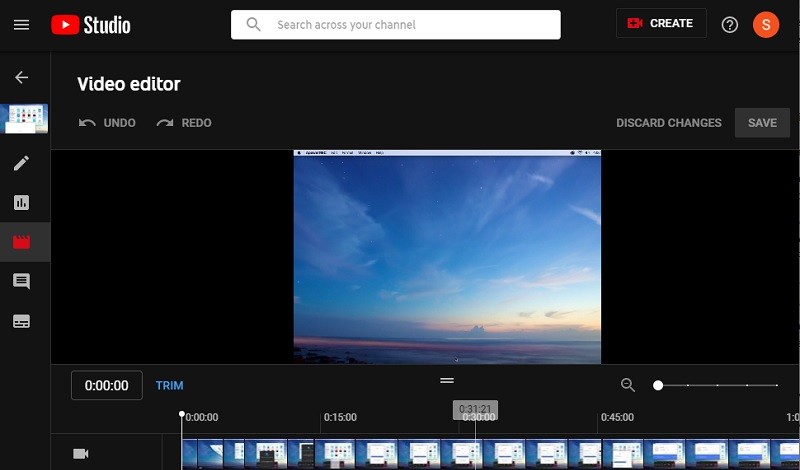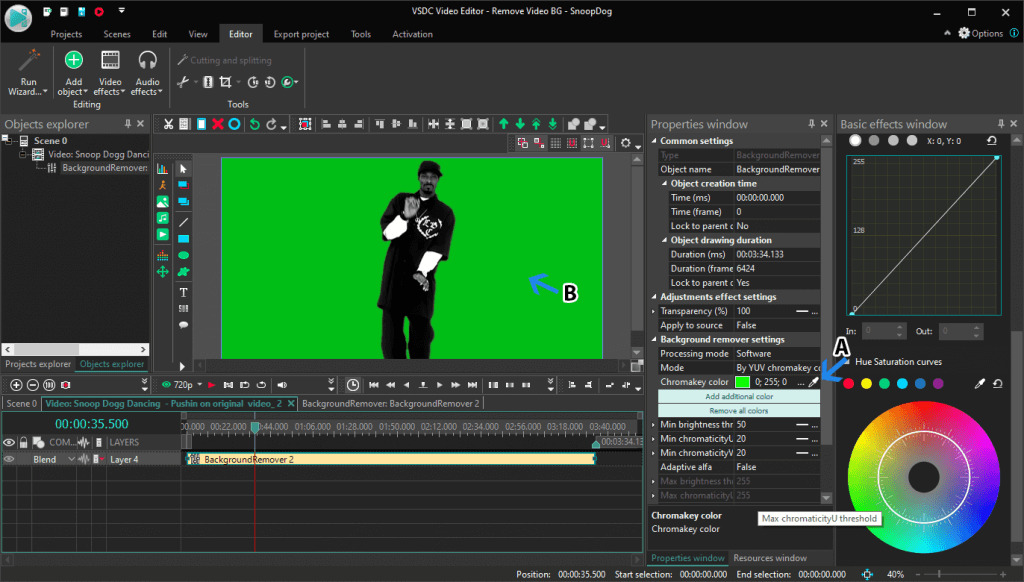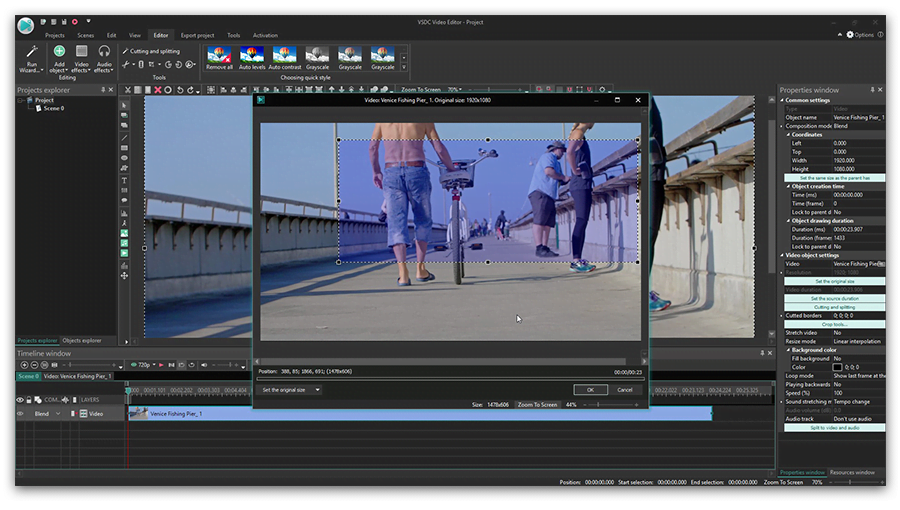

#ADD BACKGROUNND IMAGE IN VSDC VIDEO EDITOR PRO#
Equipped with an essential pro editing toolset like blending modes, a Mask tool, an advanced multi-color Chroma key, and adjustable parameter settings, VSDC allows you to take your videos from standard to extraordinary in no time at all. The hardware accelerated, non-linear system allows users to edit several files simultaneously and export videos fast, saving you loads of time. Again, this is overly and unnecessarily complex and confusing.Video editing is easy with VSDC Video Editor Pro, regardless of experience level. This will create a sprite where you can customise your effect. Then, you select the bottom clip (because that’s the one that’s on top), and add a transition to it. First you need to overlap two clips - because clips can’t be on the same track, remember. The way you add them is totally unintuitive. Sadly other sections of this app were no better. Select a clip and click on the Up icon and the clip actually goes down the list of tracks! Click on Down, and it goes above the other tracks in the timeline! At least be consistent with your design decisions!

What is not forgivable however is how you can reorder your clips: you can move clips up or down with simple arrow icons. This isn’t a failing per se: many other editors have chosen this approach too. Speaking of confusing, the track order in VSDC is the opposite of what you’d expect: if you have two clips, one on top of the other, the one on the bottom will be shown over the one above it. (Image Credit: VSDC) Editing and transitions This is insane because if you work with many clips, it won’t take long before you end up with a vast number of tracks, quickly making the whole project unmanageable.Īdding the few transitions available is done via the ‘Video Effects’ menu (top left).

Yes, you can move the clip left and right within its track to choose where in time it will appear, and move the track up or down so it’s below or above other clips/tracks, but you cannot add additional clips to that track. This is already a very odd design decision: rather than being able to put the clips wherever you want on any track, each clip is bound to its track. If you import files one at a time, they will appear in the timeline, one per track. VSDC is offering you a whole new way of working - at least I’ve never encountered this methodology before, and it even depends how you’ve imported your clips. More versatile competitors grant you access to multiple tracks, allowing you to overlay clips and create more complex projects. The most basic of editing apps allow you to only work with a single track of video and audio. This will only have serious implications if you shoot a lot of video and like the luxury of trying out various clips while building a movie.īut the absolute worse thing is how VSDC handles your media once imported. Instead, as with a number of other competitors, you import what you need, when you need it. VSDC doesn’t have a dedicated browser section, so you can’t import a bunch of files and choose whether or not to use them once they’re in the application. That in itself would make you think it’s aimed at a more experienced user, but if that’s what you’re wondering, you’re going to be sorely disappointed the moment you get to the next stage: importing media.

VSDC expects you to know the intricacies of your project’s format. Modern video editors usually base the format on the first clip you add to the timeline and this would likely be the default for most of your projects, thereby negating any potential issues should you chose the wrong parameters from the get-go. This is not something novices would be comfortable with. The first thing you’ll notice is that you must instruct VSDC about the format you wish for your project. Setting up your project’s settings, from resolution to audio frequency isn’t for the novice editor (Image Credit: VSDC) (Image credit: Image Credit: VSDC) Interface


 0 kommentar(er)
0 kommentar(er)
